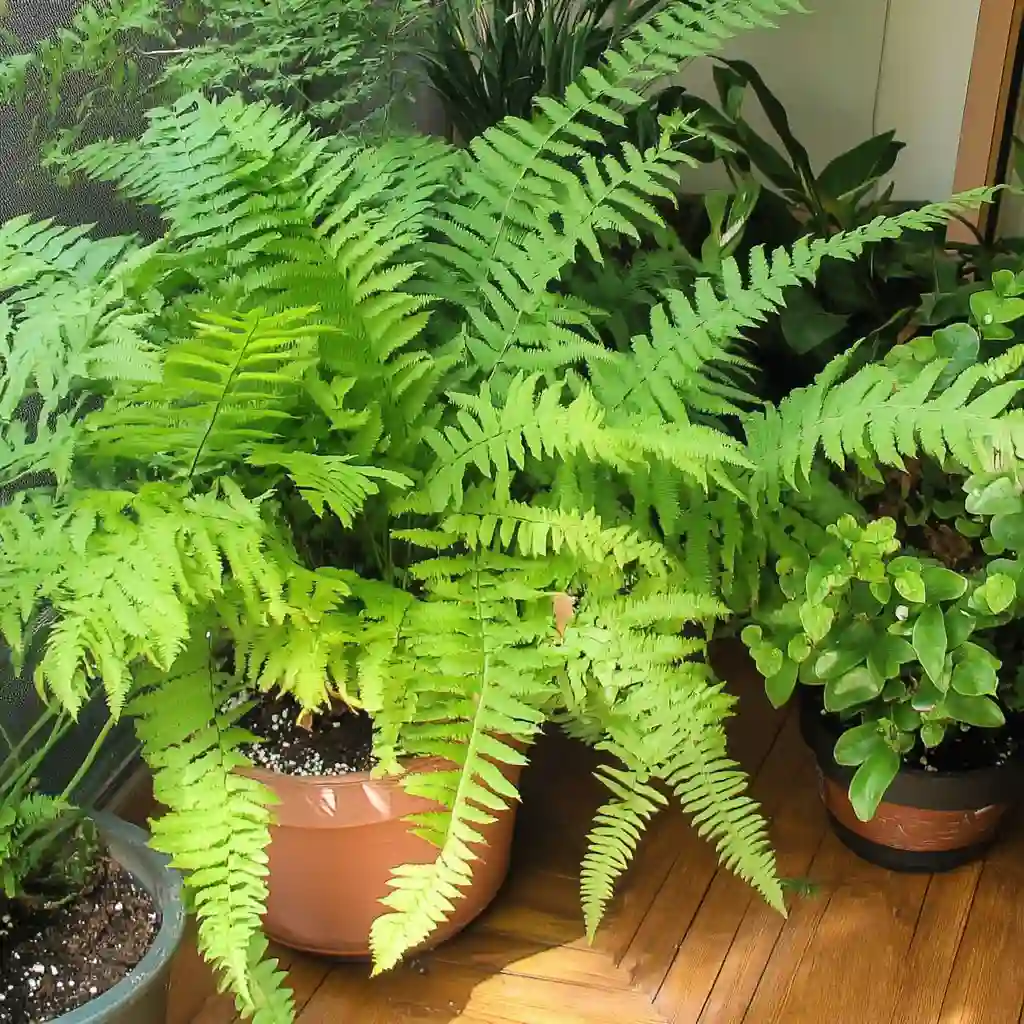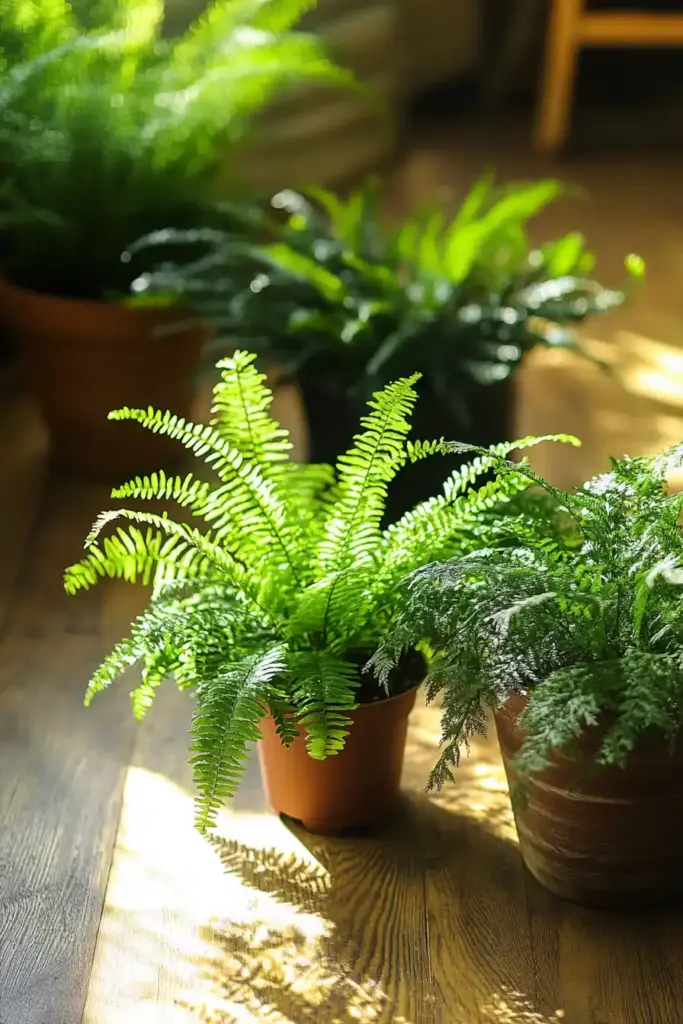Ferns have a timeless charm that can transform any indoor space into a tranquil oasis. Unlike many flowering houseplants, ferns captivate with their lush, delicate fronds and intricate leaf patterns. Their understated beauty and natural elegance make them a popular choice for adding life to living rooms, bathrooms, and kitchens alike.
Despite not offering vibrant blooms or strong fragrances, indoor ferns bring a unique aesthetic that resonates with both modern and classic design styles. Their rich history dates back to the Victorian era, when a fern craze swept through households and gardens, making them symbols of natural luxury and sophistication. Today, this passion endures as plant enthusiasts continue to celebrate the versatility and grace of these ancient plants.
Mastering Essential Indoor Fern Care
Caring for indoor ferns requires attention to detail and a commitment to meeting their unique needs. These elegant plants thrive when provided with a carefully balanced environment that emphasizes moisture, proper lighting, and well-draining soil. Here’s how to create an ideal setting for your fern houseplants:
Optimizing Humidity and Moisture
Indoor spaces often suffer from low humidity—especially in homes with central heating or air conditioning. Ferns flourish in moist environments, so consider these strategies to boost ambient moisture:
- Consistent Watering: Keep the soil evenly moist with a regular watering routine, but avoid overwatering, which can lead to root rot.
- Humidity Trays: Elevate your fern pot on a shallow tray filled with water and pebbles. This method increases local humidity while ensuring the pot doesn’t sit directly in water.
- Humidifiers: A reliable humidifier can significantly improve indoor moisture levels. Choose one that offers long run times and is simple to clean to avoid the buildup of salt or mold.
Creating a Conducive Indoor Environment
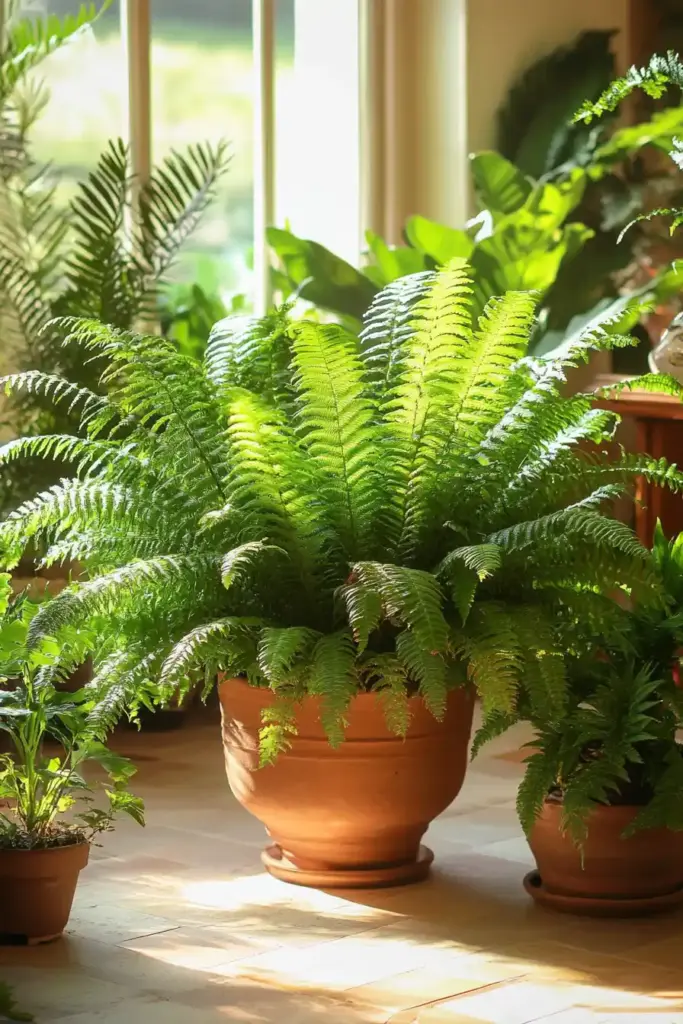
Ferns benefit from bright, indirect light paired with good air circulation. Direct sunlight may scorch their delicate fronds, while insufficient light can impede growth. To provide the best conditions:
- Filtered Light: Place your fern near a window where it can receive gentle, diffused sunlight.
- Balanced Airflow: Avoid cramped spaces by ensuring there is ample air movement, which helps distribute moisture evenly and prevents fungal issues.
These targeted care practices not only promote lush, healthy fronds but also help your indoor ferns thrive year-round.
Crafting the Ideal Base and Choosing Your Perfect Fern
Creating a thriving environment for indoor ferns starts with the right soil mix and container, paired with selecting a fern that suits your home’s conditions.
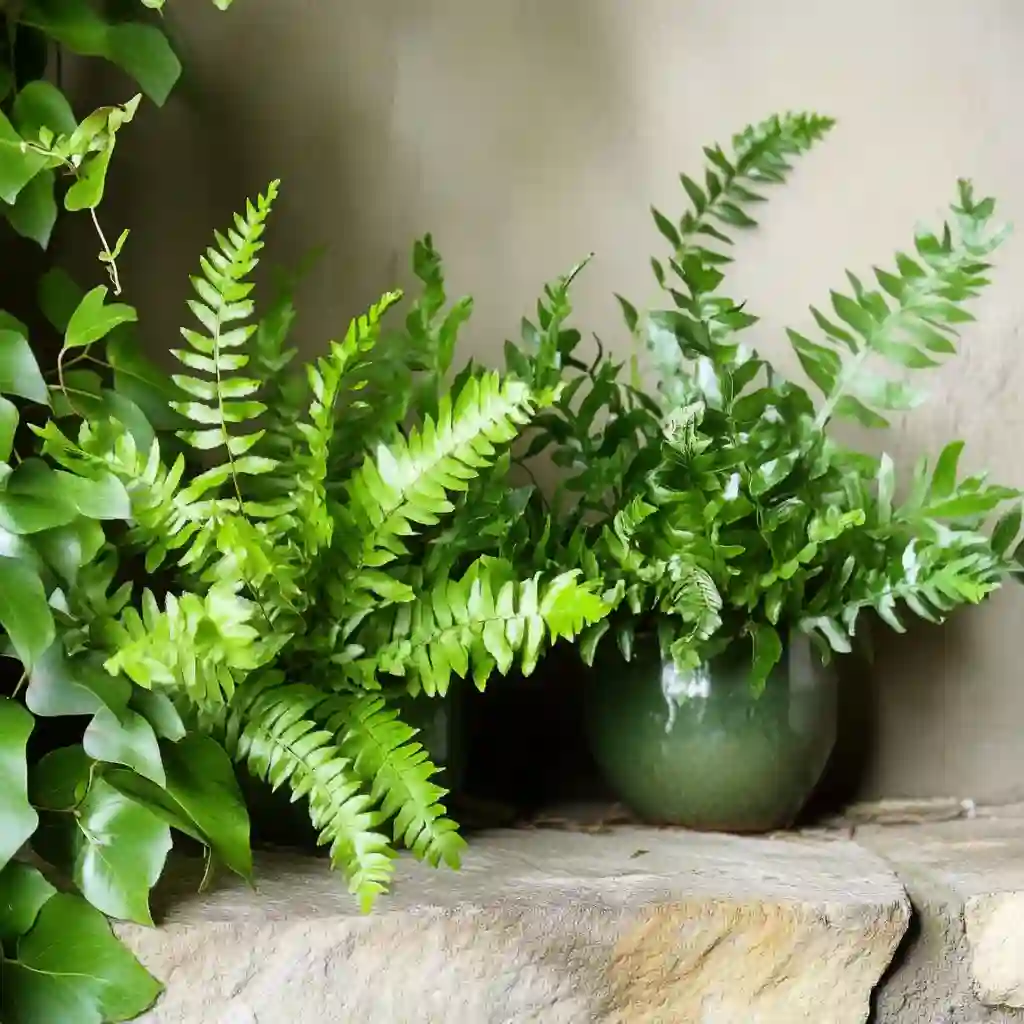
Building the Perfect Growing Medium
Ferns prefer a light, airy soil that holds moisture without becoming soggy. To achieve this:
- Soil Composition: Aim for a blend rich in organic matter such as peat moss or leaf mold, combined with components like coarse sand or perlite. This ensures excellent drainage while retaining the moisture ferns need.
- Container Considerations: Choose pots with ample drainage holes and enough room for their shallow roots. While clay pots allow for better airflow, plastic containers can help retain moisture—select the option that best aligns with your watering routine and indoor humidity levels.
Selecting the Right Fern for Your Space

Ferns are an ancient group of plants with a diverse range of species, each suited to different indoor conditions. Here are some popular choices that can complement your home:
- Caterpillar Fern (Polypodium formosanum): Known for its unique, insect-like textured rhizomes, this fern is resilient and can bounce back after periods of neglect.
- Rabbit’s Foot Fern (Davallia fejeensis): With its fuzzy, trailing rhizomes, it’s a great choice for hanging baskets, offering a distinctive, whimsical look.
- Bird’s Nest Fern (Asplenium nidus): Its broad, nest-like fronds make it a striking centerpiece that adapts well to moderate care.
- Japanese Holly Fern (Cyrtomium falcatum): Boasting shiny, holly-like leaves, this robust fern tolerates cooler spots and can thrive in brighter, indirect light.
- Button Fern (Pellaea rotundifolia): Compact and delicate, it demands consistently high humidity, making it ideal for cozy spaces with ample moisture.
When choosing a fern, assess your indoor conditions carefully. Matching the species with your available light, humidity, and space will set the stage for a flourishing indoor garden.
Propagation and Long-Term Care
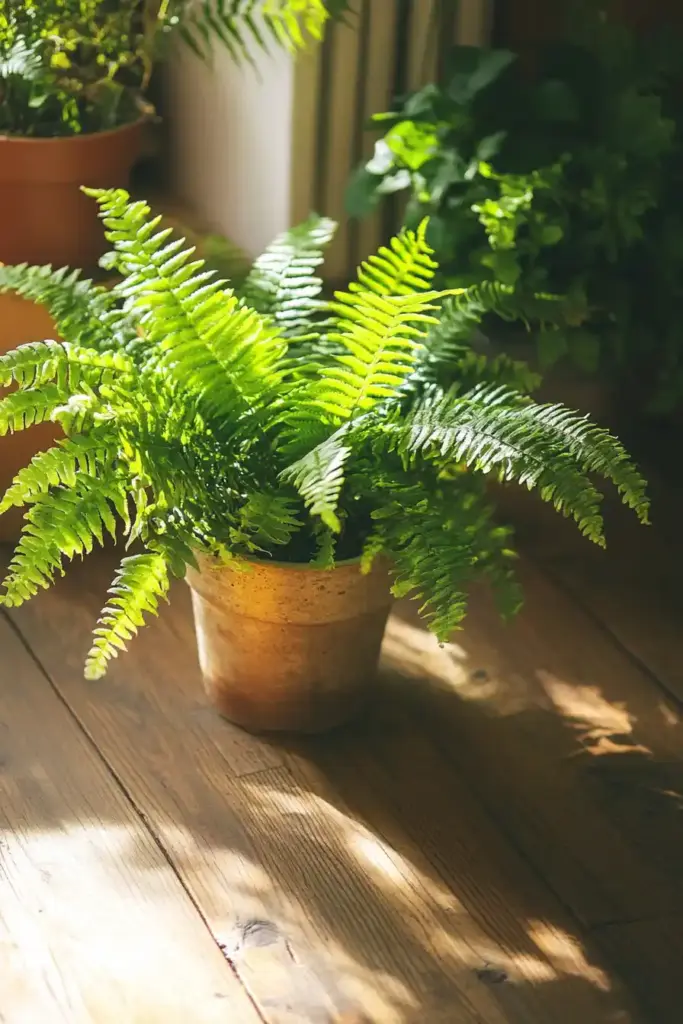
Once you’ve mastered the essentials of fern care, you can expand your indoor collection and ensure these ancient beauties thrive for years to come.
Exploring Propagation Methods
Ferns offer several fascinating ways to multiply your plant family:
- Division: The most straightforward method. Gently separate a mature plant into smaller clumps, making sure each section retains enough roots and fronds for new growth.
- Rhizome Cuttings: Many ferns spread via underground or above-ground rhizomes. Carefully cut a segment that includes active growth and replant it in a well-draining medium.
- Bulbils and Spores: Some species produce tiny plantlets (bulbils) along their fronds or reproduce via spores found on the undersides of leaves. While collecting spores is more advanced and requires patience, it offers a unique way to propagate ferns from scratch.
Long-Term Maintenance Strategies
Sustaining healthy ferns over time involves a few ongoing practices:
- Repotting: Keep an eye on root growth. Repot your fern before it becomes root-bound, using a container that offers extra space and maintains good drainage.
- Fertilization: Although ferns have modest nutritional needs, applying a diluted, balanced liquid fertilizer during the growing season can promote robust growth.
- Environmental Adjustments: Seasonal shifts may require tweaks to your watering, light, and humidity strategies. Regularly reassess your plant’s conditions to ensure its needs are continuously met.
Embracing these propagation techniques and long-term care practices not only helps you enjoy an ever-expanding indoor fern collection but also preserves a lineage of plants that has enriched our planet for millions of years.
Conclusion
Bringing the timeless beauty of ferns indoors is a rewarding journey that transforms your living space into a tranquil retreat. By mastering the essentials—from creating a humid, well-lit environment and selecting the perfect soil mix, to choosing the right species and employing effective propagation techniques—you lay the foundation for a thriving indoor fern collection. These ancient plants not only enhance your home’s aesthetic but also connect you to a legacy that spans millions of years. Embrace the art of fern care, and enjoy the ongoing growth and vitality these elegant houseplants bring into your everyday life.

